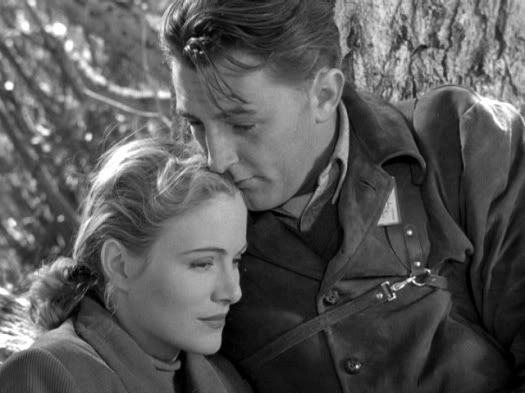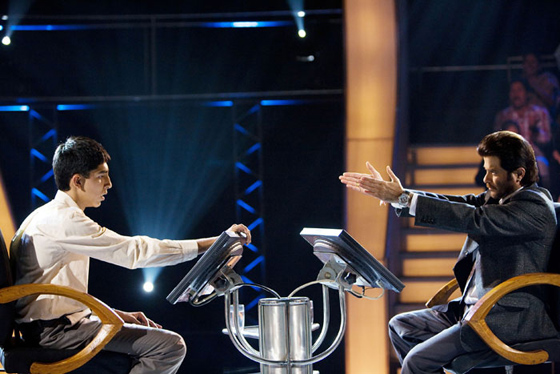
As a new student of film, I have a confession to make: I had not heard of film noir until last week. Embarrassing? Yes. But there is no time to learn like the present.
You cannot talk about film noir without first talking about the idea of genre. Thomas Schatz defines genre in his article "Film Genres" as a type of tacit contract between filmmaker and audience that promises a certain type of plot, character, setting, style and so on. A genre film honors this contract and delivers to the audience the type of film they wanted and expected. Schatz delves deeper into the idea of genre and offers this keen observation: "The determining, identifying feature of a film genre is its cultural context, its  community of interrelated character types whose attitudes, values, and action flesh out dramatic conflicts inherent within that community." The community is not a physical location on a map, but rather a "network of characters, actions, values, and attitudes." To sum this all up nicely, "A genre represents a range of expression for filmmakers and a range of experience for viewers." Genre provides a framework for both filmmakers and audiences to operate within.
community of interrelated character types whose attitudes, values, and action flesh out dramatic conflicts inherent within that community." The community is not a physical location on a map, but rather a "network of characters, actions, values, and attitudes." To sum this all up nicely, "A genre represents a range of expression for filmmakers and a range of experience for viewers." Genre provides a framework for both filmmakers and audiences to operate within.
With all that being said, Paul Schrader says in his article "Notes on Film Noir" that film noir is not a genre. "It is not defined...by conventions of setting and conflict but rather by the more subtle qualities of tone and mood...Film noir refers to those Hollywood films of  the forties and early fifties that portrayed the world of dark, slick city streets, crime and corruption." I'm going to disagree with Schrader and his idea of film noir not being its own genre. Film noir is very much a product of its time; right after World War II and year of Allied propaganda, everyone was eager to take a less optimistic view of the American way of life. Throw in the red scare, impending Cold War and McCarthyism, and it is not hard to see why Hollywood took a turn for the darker side. This is the cultural context and "community" that film noir works within. It is the framework for the ranges of expression and experience for film noir filmmakers and audiences to work within.
the forties and early fifties that portrayed the world of dark, slick city streets, crime and corruption." I'm going to disagree with Schrader and his idea of film noir not being its own genre. Film noir is very much a product of its time; right after World War II and year of Allied propaganda, everyone was eager to take a less optimistic view of the American way of life. Throw in the red scare, impending Cold War and McCarthyism, and it is not hard to see why Hollywood took a turn for the darker side. This is the cultural context and "community" that film noir works within. It is the framework for the ranges of expression and experience for film noir filmmakers and audiences to work within.
Out of the Past (1947, directed by Jacques Tourneur) is  a perfect embodiment of film noir. Jeff Bailey (Robert Mitchum) has settled into a small town out west as a gas station owner trying to avoid his past. One day, though, his old partner-in-crime Joe (Paul Valentine) tracks him down and orders him to go see the powerful gangster Whit Sterling (Kirk Douglas). Jeff had been on an assignment for Whit go so south and retrieve his mistress Kathie (Jane Greer), but Jeff ran off with Kathie, and Kathie ended up leaving Jeff. Jeff has been hiding ever since and retells the story of his past to his new love interest Ann (Virginia Huston) as he drives to meet Whit. Once he arrives, Whit gives him a new assignment that Jeff quickly realizes will catch him in a frame for murder. Crossing Whit again will not be so easy.
a perfect embodiment of film noir. Jeff Bailey (Robert Mitchum) has settled into a small town out west as a gas station owner trying to avoid his past. One day, though, his old partner-in-crime Joe (Paul Valentine) tracks him down and orders him to go see the powerful gangster Whit Sterling (Kirk Douglas). Jeff had been on an assignment for Whit go so south and retrieve his mistress Kathie (Jane Greer), but Jeff ran off with Kathie, and Kathie ended up leaving Jeff. Jeff has been hiding ever since and retells the story of his past to his new love interest Ann (Virginia Huston) as he drives to meet Whit. Once he arrives, Whit gives him a new assignment that Jeff quickly realizes will catch him in a frame for murder. Crossing Whit again will not be so easy.

Out of the Past uses several conventions typical to its film noir genre throughout the movie. The main and most obvious one is its use of lighting. Expressionist lighting burst onto the scene in the film noir genre - gone is the brilliant glow around the protagonist from the 1930s and in its place are shadows. Schrader notes that the protagonist, instead of casting a shadow, is now in the shadows. The light affects more than just the characters in the scene-the lighting of the entire set is important as well. "Light enters the dingy rooms of film noir in such odd shapes-jagged trapezoids, obtuse triangles, vertical slits-that one suspects the windows were cut out with a pocketknife," Schrader says, This use of lighting helps to create the fatalistic,  hopeless mood that film noir thrives on. For example, after the murder Whit desired had been completed, Kathie and Jeff appear to form an alliance and rekindle their love while trying to find out how to get themselves out of this tangled web. There is a close up of them kissing against the wall, but their faces are obscured by shadows. Kathie's face is completely cloaked in the shadows-the light shines past her but does not touch her face or lips. This could be foreshadowing for the remaining plot twists in this roller-coaster of deception.
hopeless mood that film noir thrives on. For example, after the murder Whit desired had been completed, Kathie and Jeff appear to form an alliance and rekindle their love while trying to find out how to get themselves out of this tangled web. There is a close up of them kissing against the wall, but their faces are obscured by shadows. Kathie's face is completely cloaked in the shadows-the light shines past her but does not touch her face or lips. This could be foreshadowing for the remaining plot twists in this roller-coaster of deception.
As said before, film noir focuses more on expressionism of tone and mood, so it uses conventions such as interior monologues to properly set the scene. When Ann and Jeff are driving in the car, Jeff triggers a flashback to his first encounter and love  affair with Kathie and narrates the whole series of events for us. We see action happening on screen-for instance, we see Jeff sitting in a bar in Mexico or walking around the hotel-but the real action is in the words he is saying. Another mood setting convention is the genre's use of music. The music crescendos in times of suspense and guides the way viewers should feel. For instance, when Kathie unexpectedly shoots one of Jeff's former partners, the music starts up instantly. And when Jeff later arrives at the building where the murder will take place, the camera zooms in on the man's name on the directory on the wall and the music simultaneously goes "da-da-da." (As a side note, this film’s use of music differs greatly from Caché and Cinema Paradiso’s use of music, two films I discussed in previous blog posts). Both the interior monologues and the music serve the same purpose-to convey the all-important expression of the mood of the film.
affair with Kathie and narrates the whole series of events for us. We see action happening on screen-for instance, we see Jeff sitting in a bar in Mexico or walking around the hotel-but the real action is in the words he is saying. Another mood setting convention is the genre's use of music. The music crescendos in times of suspense and guides the way viewers should feel. For instance, when Kathie unexpectedly shoots one of Jeff's former partners, the music starts up instantly. And when Jeff later arrives at the building where the murder will take place, the camera zooms in on the man's name on the directory on the wall and the music simultaneously goes "da-da-da." (As a side note, this film’s use of music differs greatly from Caché and Cinema Paradiso’s use of music, two films I discussed in previous blog posts). Both the interior monologues and the music serve the same purpose-to convey the all-important expression of the mood of the film.
To close, I am going to quote Paul Schrader once again: "Perhaps the overriding theme noir theme: a passion for the past and present, but also a fear of the future. Noir heroes dread to look ahead, but instead try to survive by the day, and if unsuccessful at that , they retreat to the past. Film noir's techniques emphasize loss, nostalgia, lack of clear priorities, and insecurity, then submerge these self-doubts in mannerism and style." I look forward to more thoroughly exploring this genre in the week to come.


